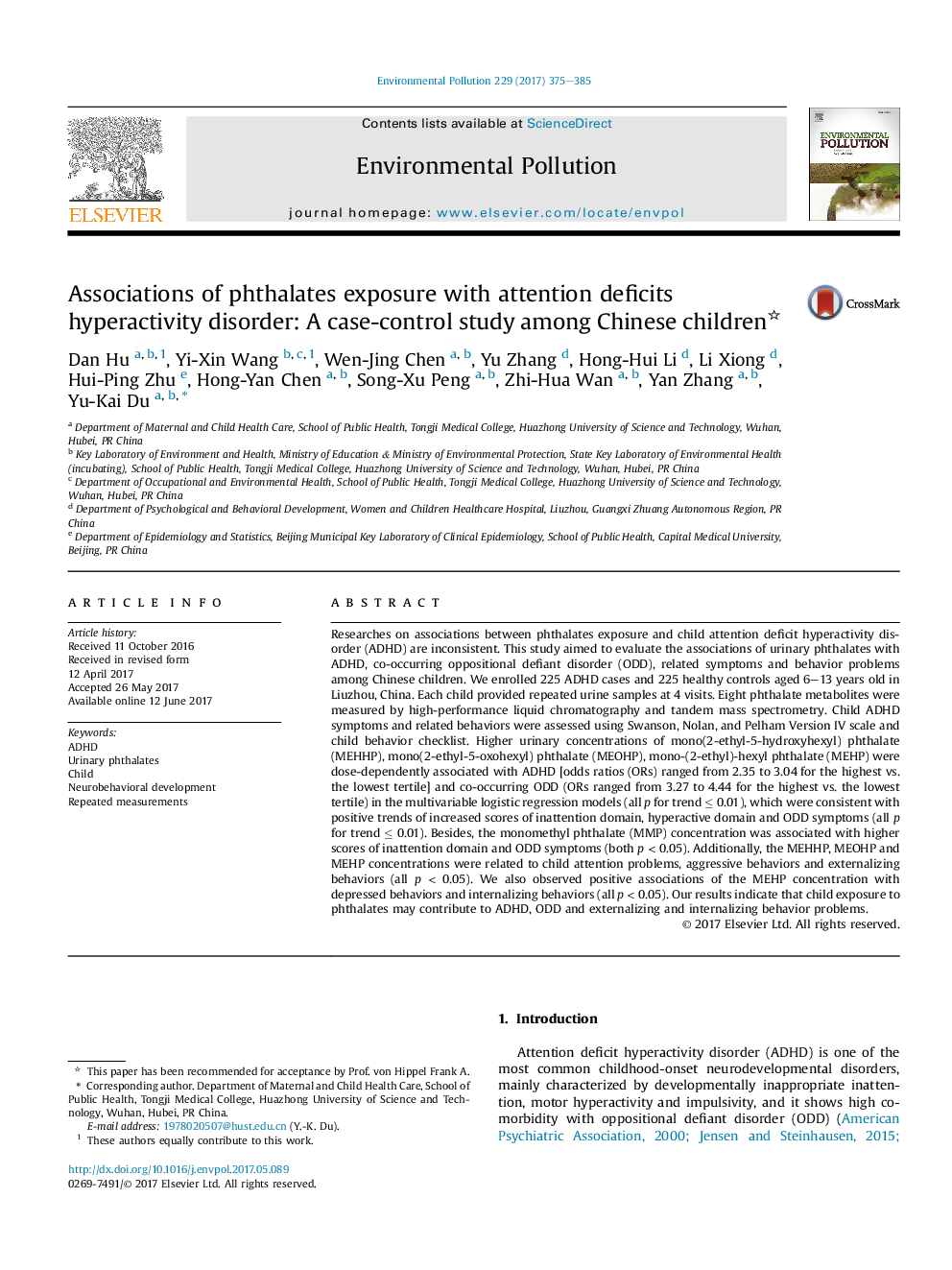| کد مقاله | کد نشریه | سال انتشار | مقاله انگلیسی | نسخه تمام متن |
|---|---|---|---|---|
| 5748785 | 1619144 | 2017 | 11 صفحه PDF | دانلود رایگان |

- Urinary Di-2-ethylhexyl phthalate was positively related to child ADHD and ODD.
- Di-2-ethylhexyl phthalate was positively related to ADHD and ODD symptoms.
- Dimethyl phthalate was associated with increased inattention and ODD scores.
- Di-2-ethylhexyl phthalate was related to inattention and aggressive behaviors.
Researches on associations between phthalates exposure and child attention deficit hyperactivity disorder (ADHD) are inconsistent. This study aimed to evaluate the associations of urinary phthalates with ADHD, co-occurring oppositional defiant disorder (ODD), related symptoms and behavior problems among Chinese children. We enrolled 225 ADHD cases and 225 healthy controls aged 6-13 years old in Liuzhou, China. Each child provided repeated urine samples at 4 visits. Eight phthalate metabolites were measured by high-performance liquid chromatography and tandem mass spectrometry. Child ADHD symptoms and related behaviors were assessed using Swanson, Nolan, and Pelham Version IV scale and child behavior checklist. Higher urinary concentrations of mono(2-ethyl-5-hydroxyhexyl) phthalate (MEHHP), mono(2-ethyl-5-oxohexyl) phthalate (MEOHP), mono-(2-ethyl)-hexyl phthalate (MEHP) were dose-dependently associated with ADHD [odds ratios (ORs) ranged from 2.35 to 3.04 for the highest vs. the lowest tertile] and co-occurring ODD (ORs ranged from 3.27 to 4.44 for the highest vs. the lowest tertile) in the multivariable logistic regression models (all p for trend â¤Â 0.01), which were consistent with positive trends of increased scores of inattention domain, hyperactive domain and ODD symptoms (all p for trend â¤Â 0.01). Besides, the monomethyl phthalate (MMP) concentration was associated with higher scores of inattention domain and ODD symptoms (both p < 0.05). Additionally, the MEHHP, MEOHP and MEHP concentrations were related to child attention problems, aggressive behaviors and externalizing behaviors (all p < 0.05). We also observed positive associations of the MEHP concentration with depressed behaviors and internalizing behaviors (all p < 0.05). Our results indicate that child exposure to phthalates may contribute to ADHD, ODD and externalizing and internalizing behavior problems.
158
Journal: Environmental Pollution - Volume 229, October 2017, Pages 375-385